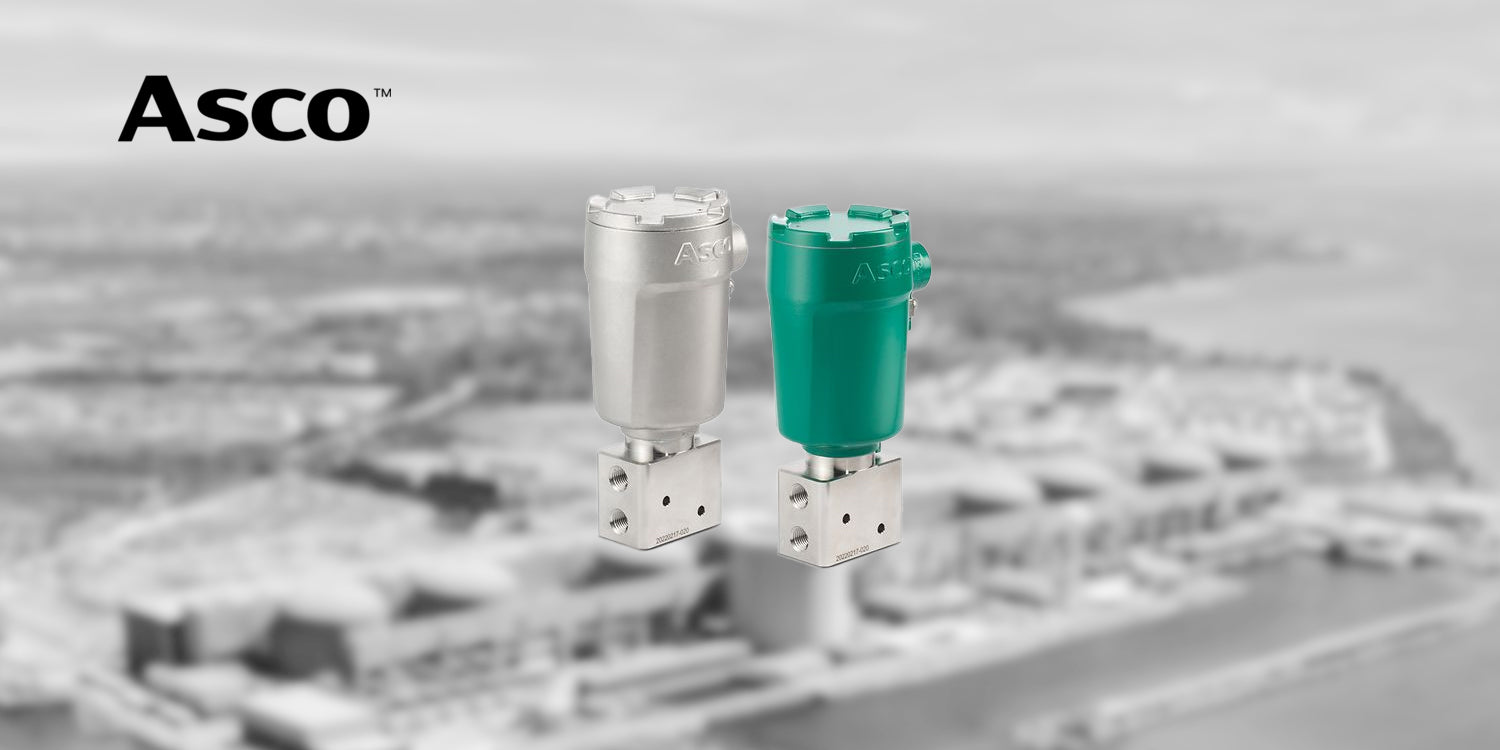In the complex world of power generation, every component must perform flawlessly to ensure operational efficiency and system reliability. Solenoid valves are no exception. These versatile, electro-mechanical devices control the flow of fluids and gases, playing a critical role in applications like turbine lubrication, steam control, and fuel delivery. Selecting the right ASCO solenoid valve can make all the difference in optimizing performance and minimizing downtime.
At HMFT, we know how challenging it can be to navigate the vast array of options available. That’s why we’ve put together this guide to help you choose the perfect ASCO solenoid valve for your power generation facility.
Key Factors to Consider When Selecting an ASCO Solenoid Valve
1. Fluid Compatibility
The first step in selecting a solenoid valve is ensuring its materials are compatible with the fluid or gas it will control. ASCO valves come in a variety of materials, including stainless steel, brass, and PVC, to handle everything from water and steam to corrosive chemicals.
- Example: For steam applications, stainless steel valves with high-temperature seals are ideal.
- Tip: Always check for contaminants or particulates in your system that could affect valve performance.
2. Pressure and Temperature Ratings
Power plants operate under extreme conditions, so it’s crucial to choose a valve that can withstand your system’s maximum pressure and temperature ranges.
- Pressure: ASCO valves can handle pressures from 0 psi up to 575 psi, depending on the model.
- Temperature: Many ASCO valves are designed for high-temperature environments, with some models rated for up to 175°C (347°F).
3. Valve Type and Operation
ASCO solenoid valves are available in various configurations, including 2-way, 3-way, and 4-way designs. The choice depends on your application:
- 2-Way Valves: Ideal for simple on/off control of fluid flow.
- 3-Way Valves: Perfect for diverting or mixing fluids.
- 4-Way Valves: Commonly used in pneumatic systems to control actuators or cylinders.
- Operation Modes: Choose between normally closed (NC), normally open (NO), or universal operation based on fail-safe requirements.
4. Electrical Compatibility
Electrical requirements are another critical factor. ASCO solenoid valves support a wide range of voltages and frequencies, including AC and DC options.
- Low-Power Options: Some ASCO models operate with as little as 0.55 watts, making them ideal for remote or battery-powered systems.
- Certifications: Ensure the valve meets any necessary certifications for hazardous environments (e.g., explosion-proof designs).
5. Flow Capacity and Pipe Size
The valve’s flow capacity (measured by its Cv factor) and pipe size must align with your system’s requirements. Selecting a valve with the correct flow rate ensures efficient operation without excessive pressure drops.
- Tip: Use ASCO’s condensed listings or consult HMFT experts to match your desired flowrate with the appropriate valve size.
6. Safety Features
Safety is paramount in power generation facilities. Look for solenoid valves with fail-safe mechanisms like spring-return designs or redundant solenoids to prevent accidents during critical operations.
- Example: The ASCO Series 8327C features a Safety Integrity Level (SIL) 3 rating for high-reliability applications.
Popular ASCO Solenoid Valves for Power Generation Applications
Here are some standout options from ASCO’s product line that cater specifically to power generation needs:
-
ASCO Series 8327C
- High-flow design with exceptional flow-to-power ratio.
- Ideal for fuel delivery systems and steam control.
- SIL 3 certification ensures reliability in critical applications.
-
ASCO RedHat Next Generation Valves
- Low-power consumption (as low as 1.2 watts).
- Compatible with both AC and DC voltages.
- Explosion-proof options available for hazardous environments.
-
ASCO Low-Power Solenoid Valves
- Operate at just 0.55 watts, perfect for remote installations.
- Designed for battery-powered systems or areas with limited power supply.
Steps to Select the Right Valve
To simplify your decision-making process, follow these steps:
Conclusion
Selecting the right ASCO solenoid valve is essential for maintaining efficiency and reliability in power generation facilities. By considering factors like fluid compatibility, pressure ratings, electrical requirements, and safety features, you can ensure optimal performance across all applications—from turbine lubrication systems to fuel delivery lines.
At HMFT, we don’t just provide industry-leading products; we offer expert guidance to help you make informed decisions tailored to your specific needs. Contact us today to learn more about how ASCO solenoid valves can enhance your power plant operations.
FAQ Section
- What makes ASCO solenoid valves ideal for power generation?
- A: ASCO valves are designed for high reliability under extreme conditions, offering features like low-power consumption, high-pressure ratings, and safety certifications suitable for power plant environments.
- Can I use one type of solenoid valve across multiple applications?
- A: While some versatile models like the RedHat Next Generation series can handle various tasks, it’s best to select a valve tailored to each specific application for optimal performance.
- How do I determine the correct pipe size for my valve?
- A: Pipe size depends on your system's flowrate requirements. Consult HMFT experts or use ASCO's flowrate charts to find the right match.
- Are there energy-saving options available?
- A: Yes! ASCO’s low-power solenoid valves operate at just 0.55 watts, reducing energy consumption significantly over time.
- Do ASCO valves work in hazardous environments?
- A: Absolutely! Many ASCO models are explosion-proof and meet certifications like ATEX and SIL ratings for use in hazardous locations.

